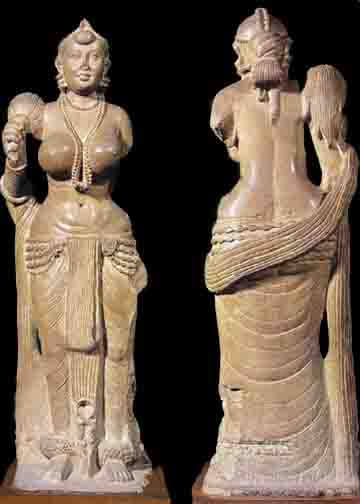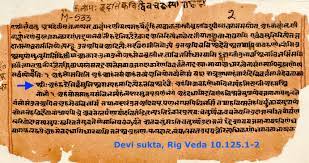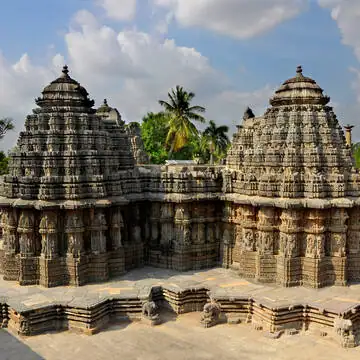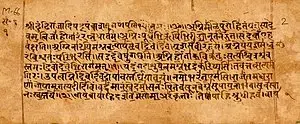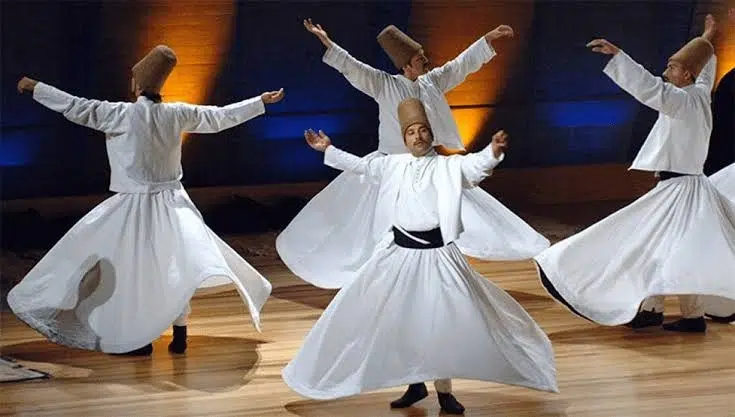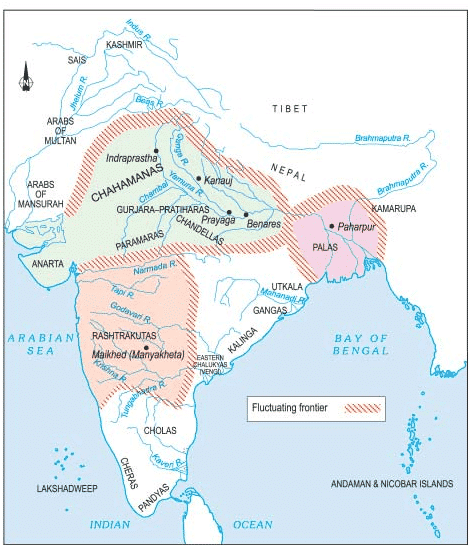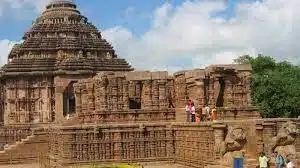Inscriptions In India
WHAT IS AN INSCRIPTION?
- Simply put, any writing onto a solid surface, for instance, seals, copper plates, temple walls, metals, wooden tablets, gravestones, memorial stones, pillars, rock surfaces, bricks, sculptures, etc., is called an inscription.
- Study of inscriptions is known as epigraphy and that of writing used in inscriptions is called palaeography.
- An inscription differs from literary text as it doesn’t undergo any interpolation unlike textual sources. An inscription is not tampered with and we see it in the present in the form – more or less a finished form – in which it was produced in the past.
- Texts authored on soft materials like birch bark, palm leaf, etc. frequently required to be copied because because old manuscripts became fragile and perishable with time. During copying, collating and recomposing they did get interpolated and even alterations and additions were made which is not the case with inscriptions.
What is Epigraphy?
- The word epigraphy is derived from two Greek words viz., epi meaning on or upon and graphie meaning to write. And hence, epigraphy is the study of writings engraved on stone, metal and other materials lie wood, shell etc., known as ‘inscriptions’ or ‘epigraphs’.
- Though engraving is the chief characteristic of an epigraphy, there are some exceptions where old writings in ink on rocks, boulders etc., are also accepted as epigraphs.
- A person who is engaged in the decipherment and interpretation of the epigraphs is called an epigraphist.
Before learning about the important Indian inscriptions, we must understand the difference between edicts and inscriptions.
Difference between Edicts and Inscriptions
The inscription is a text produced by carving the letters into a solid surface, but the actual content of the text may be more or less anything. While an edict is a decree or announcement of a law that can be issued in any physical form.
- Some inscriptions may contain edicts, and some edicts may be issued or made available in the form of inscriptions.
- Inscriptions study is called epigraphy and the study of the old writing used in inscriptions and other old records is called paleography.
List of Important Inscriptions in India
Ashoka’s Edicts: Inscriptions In India
The history of Ashoka is reconstructed on the basis of his inscriptions. He was the first Indian king to speak directly to the people through his inscriptions. These inscriptions throw light not only on the reign of Ashoka, but also reveal his external and domestic policies, his views about dhamma, and the extent of his empire.
There are a total of 33 inscriptions and are primarily classified into Major Rock Edicts, Minor Rock Edicts, Separate Rock Edicts, Major Pillar Edicts, and Minor Pillar Edicts.
They were composed in three languages – Prakrit, Greek and Aramaic – and four scripts – Brahmi, Kharoshti, Greek, and Aramaik. He used Aramaik and Greek scripts in part of his empire in present day Afghanistan. It is a matter of fact that
this was the region that was ceded by Seleucus Nicator to the Mauryas. Kharoshthi script was used in Gandhara region.
- Ashokan Edicts were deciphered for the 1st time by James Princep in 1837.
- The inscriptions were written in the Pali language (Prakrit), the exception being the Kandahar inscription which is written in Greek and Aramaic (Armenian) languages and is hence bilingual.
- The script used in the inscriptions is Brahmi (left to right).
- The only inscriptions in the Kharosti script (right to left) were Manshera and Shabazgiri inscriptions.
- There are 14 major rock edicts, cave inscriptions, and 7 pillar edicts including other inscriptions.
- Major Rock Edict 1: Prohibits animal slaughter
- Major Rock Edict 2: Describes about Chola, Pandaya, Satyapura and Keralaputras
- Major Rock Edict 13: Asoka’s victory over Kalinga. Victory of Ashoka’s dhamma over Greek kings, Ptolemy, Antigonus, Magas, Alexander, and Cholas. This is the largest edict. It mentions Kamboj, nabhaks, bhoja, Andhra etc.
- Kalinga Edicts: Declares all people are Ashoka’s son
- Kandhar Bilingual Rock Inscription: It shows how the Kalinga war changed Ashoka’s mind and gives information about his Dhamma policy.
- Rummindei Pillar Inscription: Ashoka’s visit to Lumbini and exemption of Lumbini from tax
- Nigalisagar Pillar Inscription: Mentions that Ashoka increased the height of the stupa of Budhha to its double size
- In the Maski and Girjara inscriptions, Asoka reveals his actual name.
- In the Bhabru Edict, Ashoka expressed his faith in Buddhism.
- In the Barabar cave inscriptions, Ashoka declared his secular policy.
- In the Sarnath pillar inscription, he called himself Dharma-Ashoka.
- In the Rumandei pillar inscription, Ashoka talks about land grants made to the monasteries and tax concessions given to them.
- In the II and XI separate Rock Edicts, Ashoka elaborates on his Dharma.
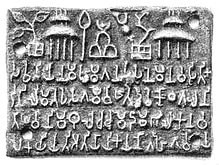
Kalinga Edicts: Inscriptions In India
- The set of Rock Edicts contains eleven out of the well-known fourteen Rock Edicts of Ashoka.
- The language of the edicts is Magadhi Prakrita and the script being the early Brahmi.
- It meant for the pacification of the newly conquered people of Kalinga.
Causes Of The Kalinga War
Chedi Dynasty
Maski Inscription: Inscriptions In India
- It is an archaeological site in the Raichur district of Karnataka.
- It lies on the bank of the Maski river which is a tributary of the Tungabhadra.
- It was the first edict of Emperor Ashoka that contained the name Ashoka in it instead of ‘Devanampriya’ or ‘Piyadassi’.
- The inscription remains a dharma shasana, and tells the people to follow the tenets of Buddhism.
- It also suggests the spread of Mauryan rule up to the Krishna valley of north-eastern Karnataka.
Junagarh Rock inscription: Inscriptions In India
- Junagarh rock inscription of Saka ruler of Ujjain Rudradaman-I(150 AD) informs us that the famous Sudarsana lake was constructed by Pushyagupta, the brother-in-law and governor of Chandragupta Maurya.
- This lake was repaired during the time of Rudradaman-I. Later it again repaired by Parnadatta during the Skandagupta reign.
- This inscription is also the earliest epigraphic evidence of vishti or forced labour.
Mahrauli Inscription / Garuda Pillar:Inscriptions In India
- The Mahrauli Iron Pillar was originally placed on a hill near the Beas and was brought to Delhi by a King of Delhi.
- Mehrauli Iron Pillar is located in Delhi in the Qutub Minar complex.
- Notable for the rust-resistant composition of the metals used in its construction.
- Established by Chandragupta-II of Gupta dynasty as Vishnupada in the honor of Lord Vishnu.
- This pillar credits Chandragupta with conquest of the Vanga Countries by his battling alone against the confederacy of the enemies united against him.
- It also credits him for the conquest of Vakatkas in a fight that ran across seven mouths of Sindhu.
Allahabad Pillar Inscription (Prayag Prasasti): Inscriptions In India
- Samudragupta court poet and minister Harisena composed the Allahabad pillar Inscription or Prayag Prasasti.
- The Pillar was an Asokan Pillar erected by Asoka six century before him.
- This Inscription is a eulogy of Samudragupta and mentions about the conquests of Samudragupta and boundaries of the Gupta Empire. As per this inscription, Samudragupta defeated 9 kings in North, 12 Kings in South.
- It is an Ashokan Stambh but has 4 different inscriptions i.e.
- Ashokan inscriptions in Brahmi script
- The Queen’s edict regaling the charitable deeds of Ashoka’s wife Kaurwaki.
- Conquests of Samudragupta written by Harisena in Sanskrit language and Brahmi script.
- Jahangir’s inscriptions in Persian
Nasik Inscription: Inscriptions In India
- The achievements of Gutamiputra Satkarni were mentioned in Nasik Inscription that were composed by his mother Gautami Balasri.
- The Nasik Prasasti describes Gautamiputra as the ruler of the Aparanta, Anupa, Saurashtra, Kukura, Akara and Avanti and defeated the Saka King Nahapana and restored the prestige of his dynasty by reconquering a large part of the former dominions of the Satavahanas.
Nanaghat Inscription: Inscriptions In India
- The Nasik and Nanaghat inscriptions are the major sources that gives detailed information about the Satavahana empire.
- The Nasik inscription was made by Gautami Balasari and Nanaghat inscription was issued by Naganika.
Kalsi Inscription: Inscriptions In India
- It is a small town located in between Chakrata and Dehradun on the banks of the Yamuna river.
- These rock edicts reflected Asoka’s human approach in his internal administration when he converted to Buddhism.
- It also reflects the policies for the commitment to nonviolence and restriction of war.
- The inscription also tells about his life when he took the path of spirituality.
- The language of these edicts is Prakrit and the script is Brahmi.
- It is made of quartz.
Aihole Inscription: Inscriptions In India
- Aihole in Karnataka was the first capital of Chalukyas.
- The inscription found at Meguti Temple popularly known as Aihole inscription witnessed many historical events of Chalukyas.
- The inscription is written in Sanskrit and it is in the Kannada script.
- It mentions about the defeat of Harshavardhana by Pulakeshin II and the victory of Chalukyas over Pallavas.
- It also mentions about the shifting of the capital from Aihole to Badami.
- They were written by Ravikirti, the court poet of Pulakeshi II.
Other Important Inscriptions In India
- Sohagura and Mahasthan inscriptions which probably belonged to Chandragupta Maurya’s reign deal with famine relief measures.
- Nagarjuna hill cave inscription of Dasaratha talks about the dedication of caves to Ajivikas.
- Nasik inscription : talks about Saka – Satavahan conflict.
- Kanheri Caves Inscription: In Brahmi script, related to Satvahanas period.
- Besnagar pillar inscription(Vidisa) : talks about the pillar constructed by Heliodorus in honour of god of gods Vasudeva.
- Hathigumpa inscription : in Udaygiri hills of Odisha, talks about the achievements of Kharvela of Kalinga, a chedi ruler. It consists of 17 lines in the Prakrit language and in the Brahmi script.
- Bhanugupta’s inscription at Eran : first inscriptional evidence of Sati.
- Uttarmerur: It discusses the Chola village assemblies.
- Boghaz koi : Proves Rig Veda to be more than 1400 BC old. It mentions the name of the Vedic gods and goddesses.
- Tosham Rock Inscription, Haryana: Dedicated to Vaishnava sect (Satvata/Acarya) dating to 4th and 5th century CE.
- Badami Chalukya Inscription in Old Kannada: Virupaksha temple, 745 AD.
- Halmidi Inscription: oldest inscription in the Kannada script.
- Rabatak Inscription: Written on a rock in Bactrian language, the inscription relates to Kushan emperor Kanishka and gives remarkable clues to the genealogy of the Kushan dynasty.
- Mandsaur Inscription: It was by Kumaragupta and was written by Vattasbhatta.
Ancient Indian Inscription PDF
Also, refer :


